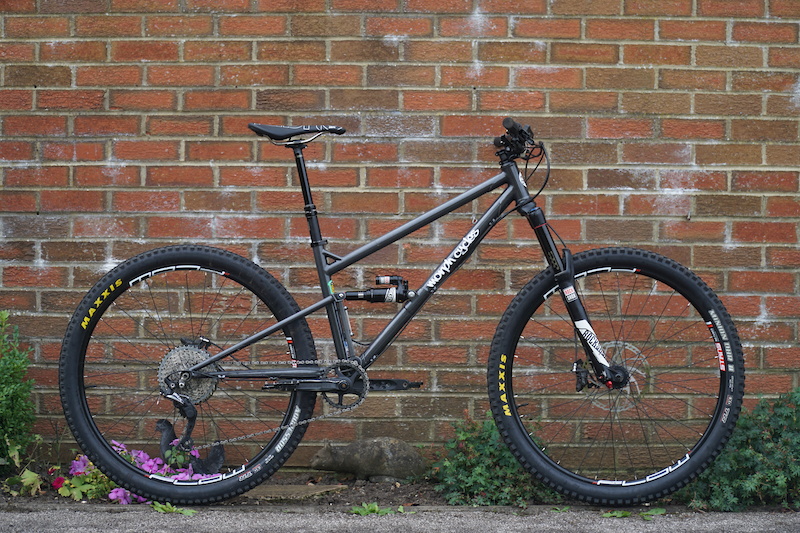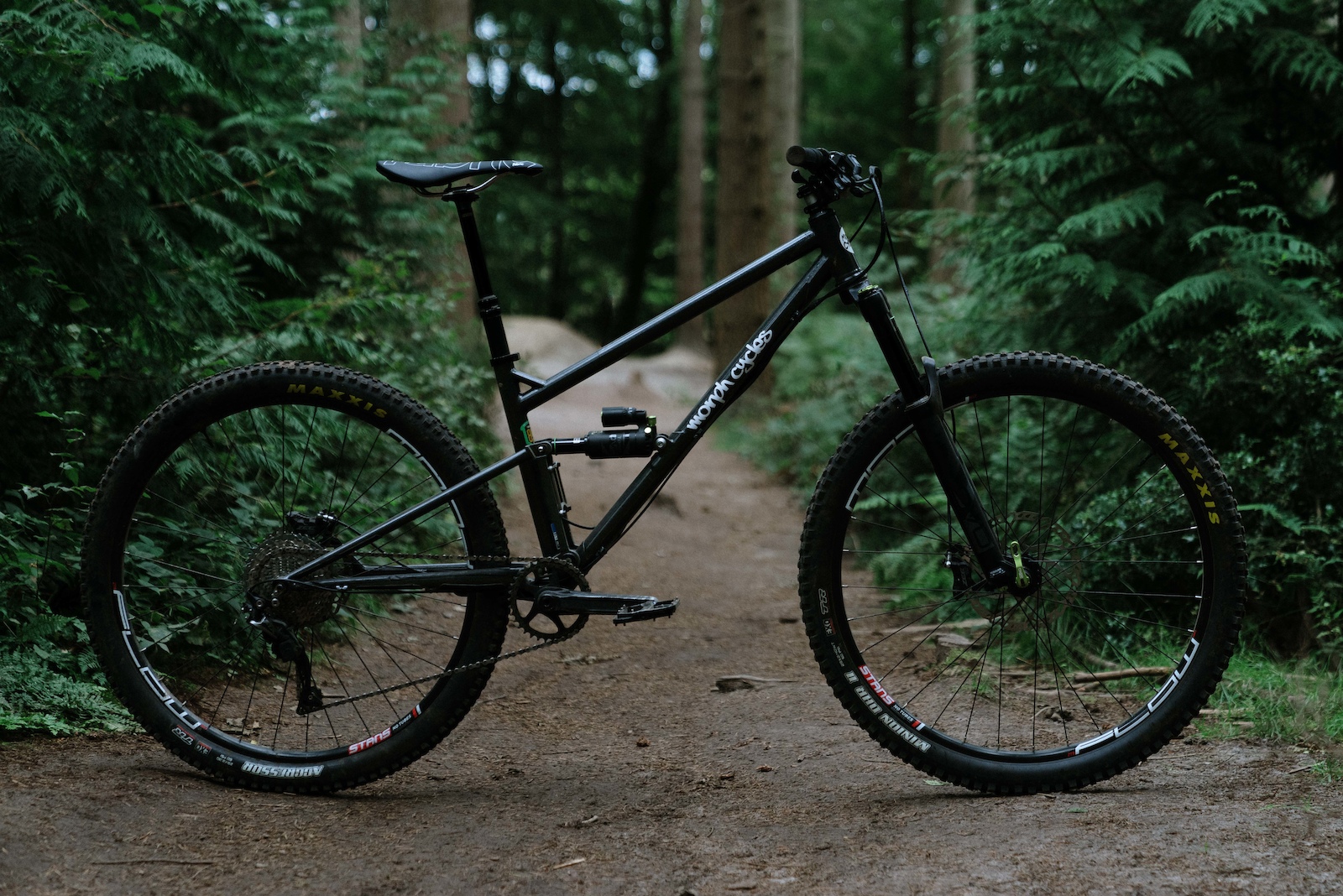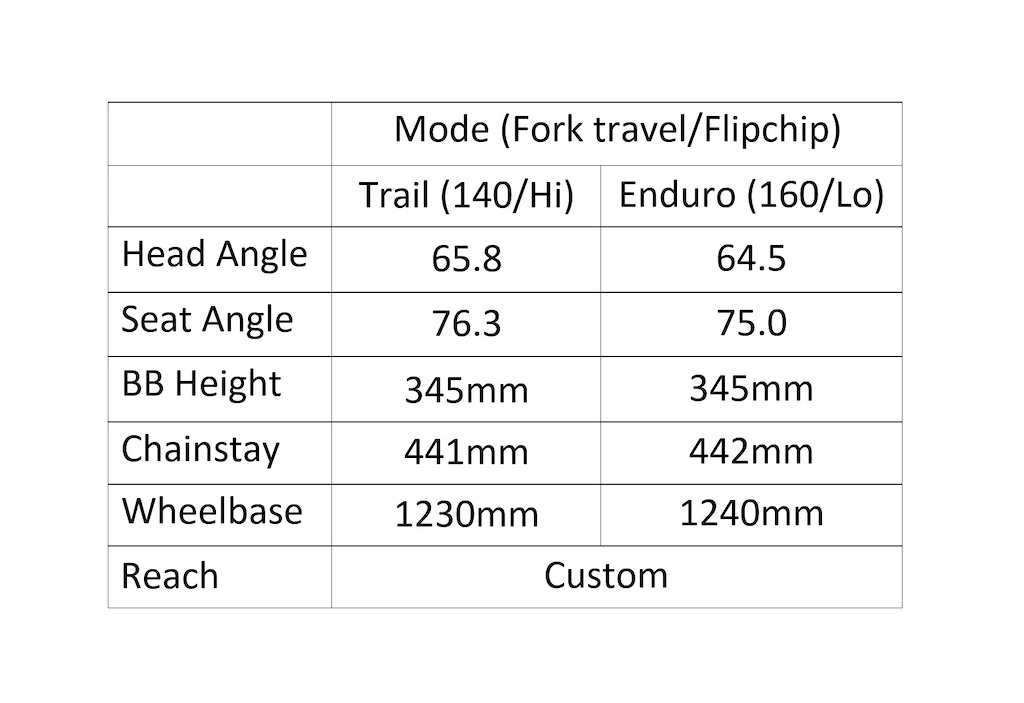Stories posted under Pinkbike Community blogs are not edited, vetted, or approved by the Pinkbike editorial team. These are stories from Pinkbike users.
If a blog post is offensive or violates the Terms of Services, please report the blog to Community moderators.
How I Started Morph Cycles
Who is writing this?
My name is Tom; I'm 23 years old from Hampshire in the UK. I've been a keen mountain biker, pinkbike user and bike nerd since I was about 12 or 13. I recently graduated university and am currently putting all my effort into my personal project/start-up business, Morph Cycles.
What is Morph Cycles?
I started Morph Cycles at University. My goal with it was to design my own dream bike - not just a bike I'd like to ride for one day in one place though; I was thinking if I could only have one bike to ride everything for the next 5 years, what would that bike look like?
I ended up designing this low standover steel 29er. Its party trick is that it features a flipchip that allows it to be set up in different ways.
My name is Tom; I'm 23 years old from Hampshire in the UK. I've been a keen mountain biker, pinkbike user and bike nerd since I was about 12 or 13. I recently graduated university and am currently putting all my effort into my personal project/start-up business, Morph Cycles.
What is Morph Cycles?
I started Morph Cycles at University. My goal with it was to design my own dream bike - not just a bike I'd like to ride for one day in one place though; I was thinking if I could only have one bike to ride everything for the next 5 years, what would that bike look like?
I ended up designing this low standover steel 29er. Its party trick is that it features a flipchip that allows it to be set up in different ways.
How I came up with the design
I wrote myself a rough brief and then pretty much just dived into it head first. I spent a lot of time experimenting with Linkage X3 to see what I could come up with. I wanted to be able to put a flipchip in the suspension that was going to compensate for a ~20mm change in fork A2C and maintain good geometry. I eventually took a 2D design I'd created in Linkage and went about creating it in 3D in Siemens NX (CAD software). I did a tonne of virtual prototyping in CAD, redesigning layouts and parts over and over. I used 3D printers to create scale models of a few of the parts, but other than that I did pretty much all the prototyping virtually - creating something in my CAD model, thinking about potential issues and then trying to come up with something better.
Once I had a design I was happy with I headed to the University Workshop and started making all the parts I had designed on lathes and CNC machines. I managed to find a frame builder who was cool enough to take on the task of putting the frame together for me: Gael Baudou of Baudou Bikes. He was super on-board and did an absolutely killer job. I can't thank him enough.
Why I went with steel
From the very start I wanted to build from steel. Steel bikes have a timelessness not often seen in other frame materials. If a steel bike is in good condition it's very hard to guess the age, it doesn't look like an old design after only 1-2 seasons. Steel also gives beautiful clean lines, excellent fatigue resistance and desirable flex characteristics.
Why I went with single pivot
Single pivot has great benefits in terms of longevity and serviceability - which if you want your bike to still be riding well in a few years time matters a lot. There are only two bearings which are both easy to access for frequent inspection and regreasing - and when it comes time to change the bearings out it's a simple job.
Historically, single pivot designs have had a bad reputation for bobbing under pedalling and suffering from chain growth. However, with the advent of 1x drivetrains the impact of both of these factors has been significantly reduced. With careful pivot placement the anti-squat is over 100% in all of the climbing gears and the high tuneability of modern shocks and widespread use of pedal switches have benefited the single pivot platform a lot. Any perception that you need multiple pivots to get decent suspension performance is just not true.
The suspension curve is completely linear which I think is ideal for all the suspension fettlers out there. It's a neutral platform which allows you to create the ride you want using the adjustability of your shock.
Why it's different

0% Loaded
1/24
Although the rear travel is fixed at 142mm the frame can be run with either a 140 or a 160 fork to create different ride characteristics. 140mm Pike vs 160mm DVO Diamond shown here.
'Versatile' is a classic bike industry buzzword and gets a lot of people groaning, but whether we like the word or not, versatility is hugely important for everybody who doesn't want to or can't afford to own half a dozen bikes. I wanted to design a bike that was going to be more versatile than most others and genuinely alleviate the need for a second bike for some people.
Most people's local trails don't justify a downhill bike or even a 160-170mm super enduro bike. Something like a 140 travel trail bike with modern geo will serve most people super well for the majority of their riding, but the problem then comes with what to ride for a trip to the bike park.
To try to answer this I designed a flipchip into this bike that would allow the same frame to run a 140 or a 160 fork. The geo is more aggressive in the 160 mode and more moderate in the 140 mode, so it's almost like having 2 different bikes.
You can then configure the bike differently for whatever riding you're doing more of at the moment. Before an Alps trip it probably makes sense to put the fork up to 160 and embrace the more aggressive geo, for example.
Most people will probably leave it in one mode almost all the time - but hey - nice to have the option.
Geometry:
• Geometry will vary slightly depending on how you build the bike.
• Fork A2C, fork offset, tire size(s) will all impact the resultant geometry. The numbers given here are for guideline purposes only.
• The chart to the right assumes 51mm fork offset, a 2.3 rear tire and a 2.5 front.
• Assumed 545mm A2C @ 140 and 565mm @ 160.
• The bike pictured is 470mm reach and the wheelbase measurements given are for that frame.
Advice to anybody who wants to design their own frame
It is of course an absolute tonne of work, particularly if you want to go through a thorough R&D process as opposed to just making it up as you go along. I spent a very long time sat in front of a computer screen pulling my hair out - but I think the result is always likely to reflect the time that went into it. Everything you need is out there if you look for it; don't be afraid to spend time on getting it right.
The future of Morph Cycles
• I'm currently working on a second prototype which will be very similar to this one, the only changes being made are refinements - nothing major about the design is going to change.
• Frames are likely to be available to buy frame-only or as a frameset in early 2020 if all goes to plan.
• The frames will be made-to-order. Designed in the UK and made in France with custom options available.
• More information available at www.morphcycles.co.uk
MENTIONS: @morphcycles @DVOSuspension
Author Info:
Must Read This Week
Sign Up for the Pinkbike Newsletter - All the Biggest, Most Interesting Stories in your Inbox
PB Newsletter Signup
1 Comment
- 1 0
Sign me up
Login or Sign Up










 Member since Mar 22, 2019
Member since Mar 22, 2019